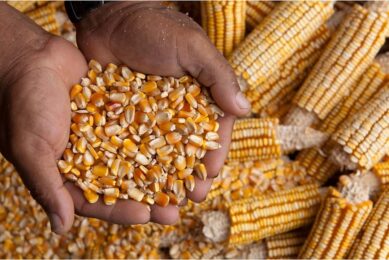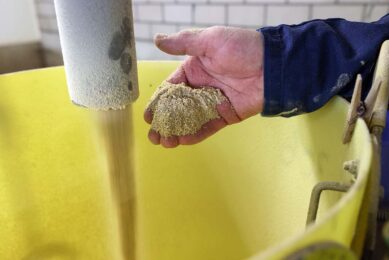Strong demand for fishmeal
World fishmeal production in 2006, at 5 million tonnes, was 20% below average levels-a consequence of climatic conditions and reduced fishing effort to conserve stocks. Prices virtually doubled as a result, driven by continued strong demand in expanding worldwide aquaculture markets.
Feed makers still recognise the nutritional benefits of fishmeal. Despite high prices and availability of synthetic alternatives, fishmeal continues to be viewed as a vital feed ingredient for farm livestock, and is still widely used in pig and poultry diets.
In the UK, for example, official UK statistics show 2006 consumption on a par with 2005, and a recent FIN (Fishmeal Information Network) survey of pig producers confirmed that fishmeal is still widely used in pig feeds, especially in medication-free weaner and early grower diets.
Insurance policy
At an average price ratio of 1:5 against soy meal, fishmeal’s continued inclusion defies all previous rules of thumb, yet farmers point to its critical role as an ‘insurance policy’ in maintaining fertility and herd health.
Fishmeal prices have now peaked and are forecast to come down this year with a return to more normal production levels of 6 to 6.5 million tonnes.
Challenge to fishmeal
But high prices have not been the only challenge. In 2001, feeding fishmeal to ruminants in the EU was banned as part of BSE control measures. Initial concerns that fishmeal could contain infected meat and bone meal fuelled wider political debate about the sustainability of fish stocks and the ethics of feeding non-vegetable proteins to farm livestock.
A unique partnership between GAFTA and the Sea Fish Industry Authority, FIN was set up to promote fishmeal in the face of such pressures.
Drawing on factual evidence and independent sources of information, FIN has consistently highlighted the quality and integrity of fishmeal, its production and its responsible sourcing from managed non-food fish stocks and food fish trimmings.
Ban relief
With no scientific evidence to link fishmeal with BSE-type conditions, FIN has supported efforts to keep fishmeal on the European agenda since the 2001 ban.
In December 2006, a common text was finally agreed between the EU parliament and Council which paves the way, firstly for fishmeal to be used in multi-species mills, and secondly for fishmeal to be permitted once again in the diets of young ruminants. This will be welcome news for many livestock farmers.
Effects
The effects of fishmeal’s withdrawal from ruminant feed were highlighted in a recent FIN survey of Scottish hill sheep farmers, more than 90% of whom wanted to use fishmeal again.
Most had encountered major difficulties in maintaining the milkiness of ewes without fishmeal, and some reported an increase in serious welfare problems, including lamb mortality and hypocalcaemia, or ‘staggers’ in breeding ewes.
 Beheer
Beheer








 WP Admin
WP Admin  Bewerk bericht
Bewerk bericht